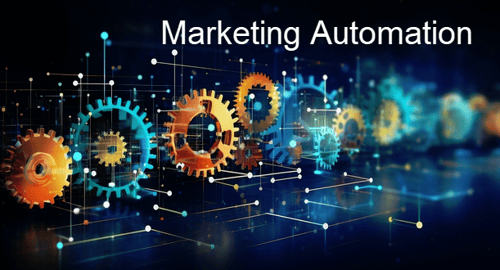 With all the buzz right now around integrating AI and automation solutions into organizational strategy, it is worth taking the time to understand what kind of benefits marketing automation can offer and how to best utilize it to drive organizational success.
With all the buzz right now around integrating AI and automation solutions into organizational strategy, it is worth taking the time to understand what kind of benefits marketing automation can offer and how to best utilize it to drive organizational success.
Let’s look at which kinds of activities are included in marketing automation, where it is best utilized to drive value, what its limitations are, the ethical considerations to keep in mind along the way, and what is coming next.
Defining Marketing Automation
Marketing automation is one component of an overall marketing strategy that should affect every contact that you have in your database. Whether they are a brand-new lead or an existing customer there are different ways to use automation at every stage of the funnel to reach each of them.
In general terms, marketing automation includes things like email, workflows, and social media that are all woven through your CRM (Customer Relationship Management) system. If it is doing its job effectively, your CRM should be keeping track of what your contacts do, when, and what kind of interaction results afterwards – everything from opening an email to clicking on an online ad or interacting with a social post. Automation should be able to be aware of and then leverage the different activities that your contacts are making at scale to insert each one into the right workflow for where they are in the process.
Businesses need the efficiency of automation to nurture leads and customers because they cannot be everything, all the time, for everyone.
Demonstrating the Benefits of Marketing Automation to Drive Value
Marketing automation can create value in the following areas:
- Lead nurturing
- Audience segmentation
- Triggered emails
- Email campaigns
- Lead scoring
- Reporting
- Multi-channel marketing alignment
But of all its possible benefits, sales efficiency is where marketing automation can create the most value.
Because of the way the internet has grown and the ubiquitousness of the technology that we carry around with us all day every day, having a presence online is mandatory. Whether you are using outbound or inbound marketing, a huge pool of people can find your company and your products faster than ever before. Marketing automation allows you to efficiently and effectively determine out of that huge pool of people who your ideal prospects are and how to best engage them. The fact of the matter is that some people make good customers, and some do not. If someone will not be a good customer, you shouldn’t invest any time in them. Use marketing automation to refine leads so your salespeople can sell better – turning them into customers efficiently and effectively.
Where Automation Falls Short
The biggest thing that companies miss when using marketing automation is the human element. Remember, you cannot rely solely on automated contact! There needs to be human interaction at some point in the process. Without the personal interaction mixed in there (whether a phone call, event, or meeting – something that is truly human to human), no amount of marketing automation is going to be successful.
Once someone moves from being a lead to a prospect and then becomes a customer, you still need to use automation to continue to nurture them (only now they are being nurtured as a customer so that your existing customer base does not feel like they are being abandoned once salespeople go back to selling). It is vital work to keep that relationship and retain them.
Some companies only use automation and workflows for nurturing to convert them into a customer and then the customer falls through the cracks. Companies rely too heavily on what they think is personalization and then they leave the human interaction until it is too far down in the funnel. If they move the human element up the funnel, it is much more effective.
Automation will not replace your salespeople because it is not personal, but it will augment what they are doing, and they should augment what it is doing as well. As leads are nurtured through marketing automation a chance to create a real relationship, through a personal phone call or invitation, will solidify the connection.
Heeding Privacy Concerns
In the race to better leverage marketing automation, organizations must be cognizant of ethical considerations as well. Buying email lists or selling contacts’ personal data is not only unethical, but also illegal in many cases. And while these are flagrant ethical violations, less obvious privacy concerns should be considered as well, such as not spamming customers with too many offers or sending them emails that they are not interested in from partnering organizations.
Trends in Automation
The shift from salespeople selling face-to-face into more self-service buying models has extended the use of automation from marketing automation into sales operations. These days even when buyers do not talk to a person at every stage it should be a smooth and seamless purchase process throughout, which means there needs to be an overlap between marketing automation and sales operations to align sales and marketing.
Utilizing marketing automation is a great way to achieve greater organizational alignment while driving business value. For more B2B sales and marketing insights, check out the B2B Business Growth Library for free on-demand resources like whitepapers, eBooks, and spreadsheet templates. If you would like some more customized recommendations on how you can achieve greater business success, please reach out to me to get the conversation started.
